Cold Brew Coffee
Is cold brew coffee all the rage in your area? Two years ago, I never even heard of cold brew….naturally thinking it was maybe some new kind of beer. I began noticing it at the Farmers Market and occasionally on the shelves at the grocery store, but until recently, I never tried it. I’ve always been a “brew your own/hot cup of coffee in the morning” gal.
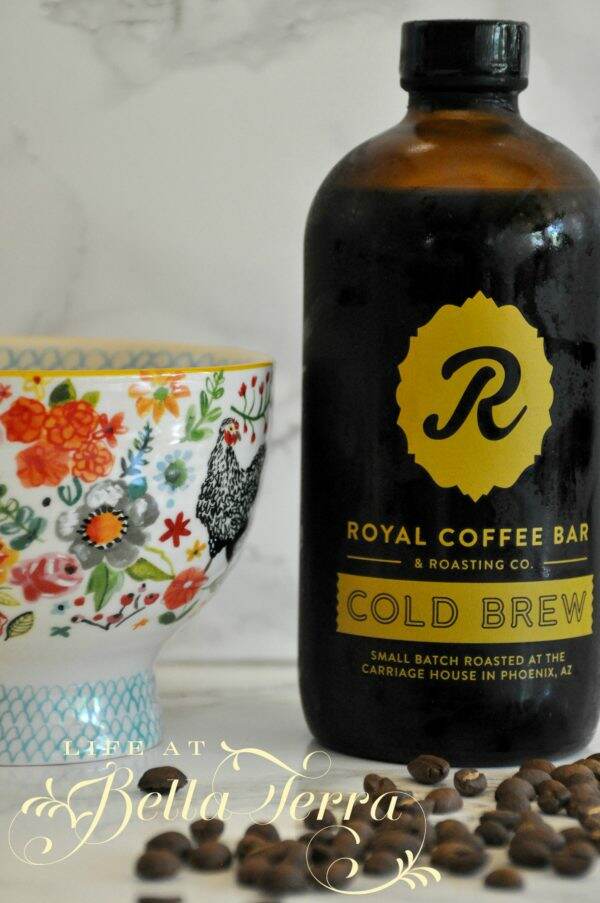
Since then, I now notice it EVERYWHERE and it appears to be a marketing phenomenon. So what’s the big attraction? I finally did some research and if you are as unfamiliar with cold brew as I am, then hopefully this will be the Cliff notes on cold brew.
Why is cold brew coffee different from hot brewed coffee? According to ToddyCafe, a roasted coffee bean contains many compounds that are extracted during the brewing process. Some of those compounds, including certain oils and fatty acids, are soluble only at a high temperature. During the cold brew process, coffee beans are never exposed to high temperature. Deceptively simple, cold water brewing extracts the delicious flavor compounds (and some of the caffeine) from coffee beans, but leaves behind myriad bitter oils and biting fatty acids, including undesirable elements such as ketones, esters and amides. You can serve cold brew coffee concentrate either hot or cold.
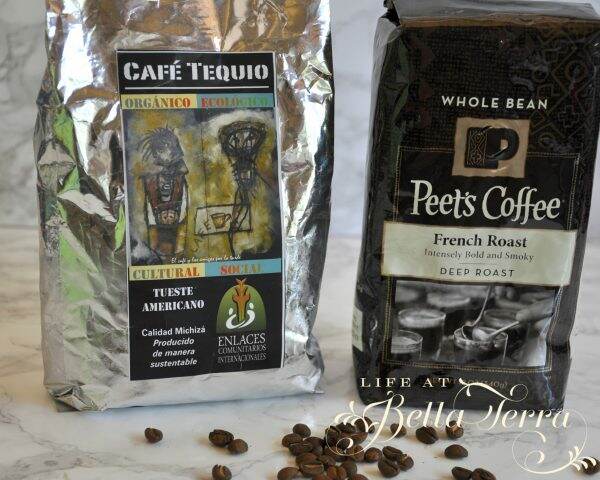
Cold brew coffee is not iced coffee, either. Iced coffee is pouring hot brewed coffee over ice. Cold brew coffee is like sun tea~~naturally extracting the flavor with water and time.
You can certainly buy cold brew coffee but it’s very simple to make yourself at home.
I am experimenting with 3 different brewing techniques using a French press, a Ball mason jar, and a Teavana strainer. Plus I am using 3 different types of coffee: 1) old (really old) Mexican coffee beans from my freezer; 2) French Roast beans from Peet’s coffee; 3) already ground coffee from World Market.
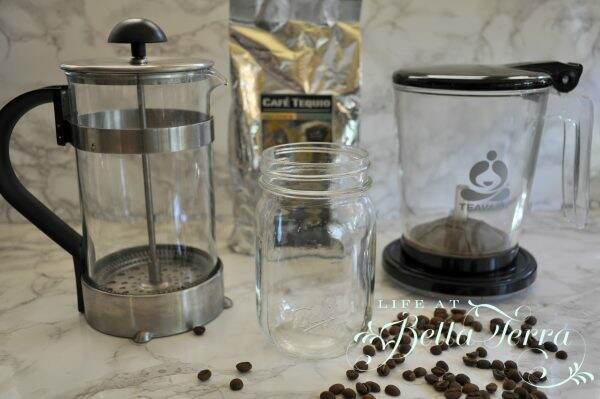
There are many theories as to the perfect ratio of bean to water, however, it appears that the ratio is from 1/4 lb. of coffee beans to 4 cups of water. I used this ratio~~ 1/4 cup of coffee grounds to 1 cup of water. You can adjust the strength based on your personal preference.
In the Ball mason jar, I added 1/4 cup of medium coarse grounds from the freezer beans.
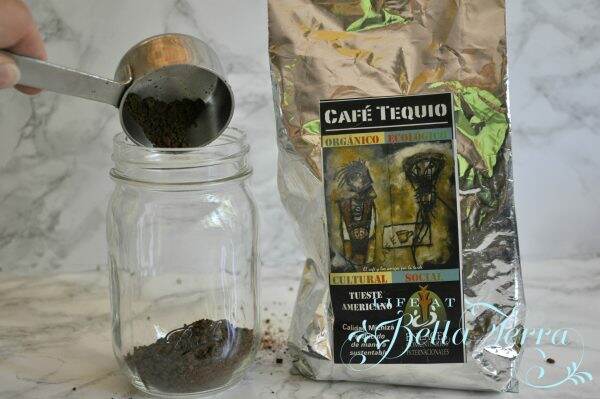
Then I add 1 cup of filtered water from our reverse osmosis system. Stir well and cover with cheesecloth.
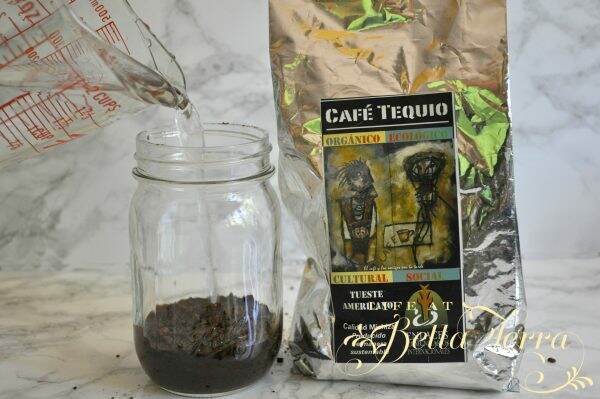

Next, I added medium coarse Pete’s coffee grounds to the French Press and filled with water.

And lastly, I added regular Italian Roast ground coffee from World Market to a Teavana tea strainer with the appropriate amount of water.
 h
h
Now all three were ready to sit and wait 12- 24 hours. I couldn’t fit the French Press into the refrigerator so it sat out on the counter for 24 hours.
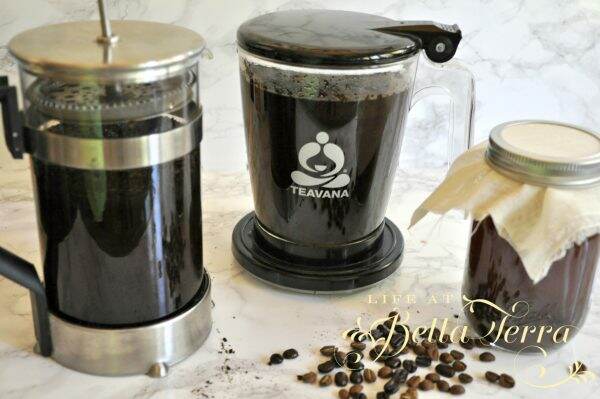
The next day, I strained the coffee grounds out of all three. The jar with the cheesecloth was the most difficult.
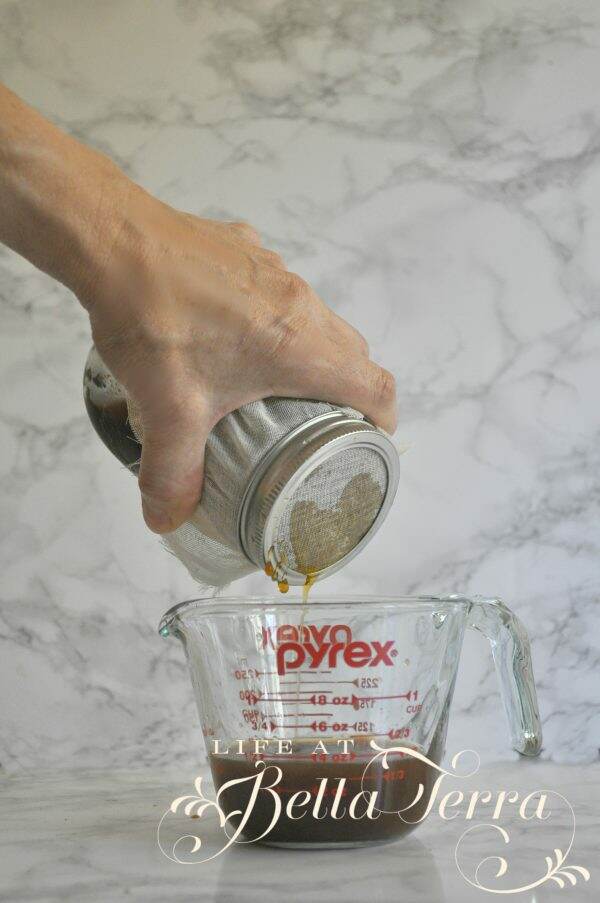
Both the French press and Teavana strainer were extremely easy due to the built-in straining system.
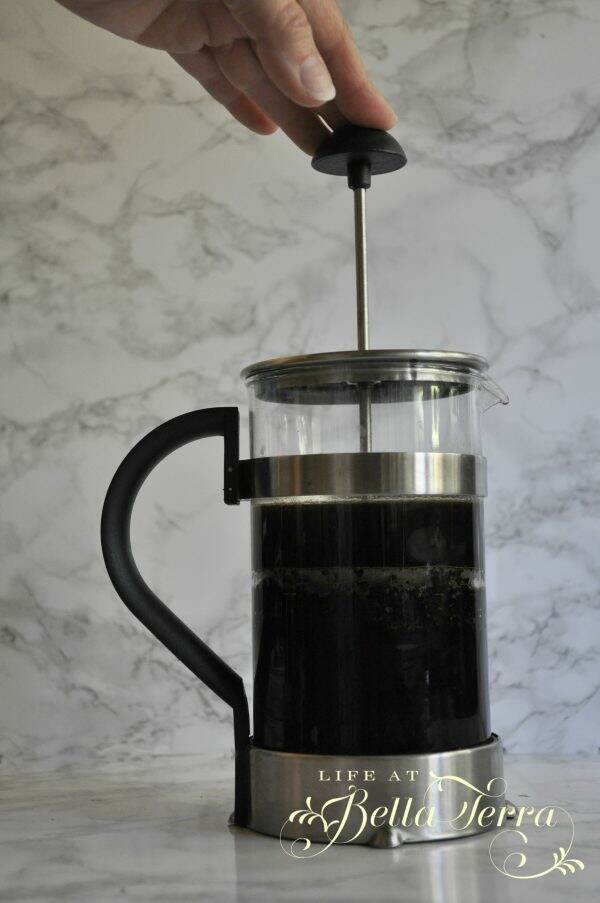
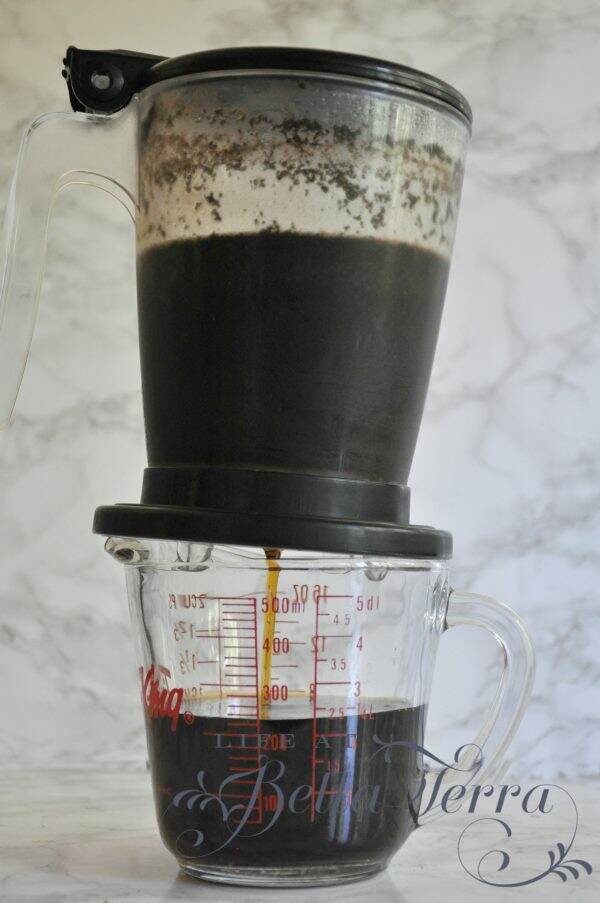
Here’s the VERDICT!!! The old coffee beans brewed in the Ball mason jar produced the weakest brew and was a bit lifeless. No surprise there and just confirms that you should discard any coffee beans that have been sitting in your freezer for years (embarrassing…). Not the fault of the coffee bean.
The winner: The strongest and most flavorful coffee was the Peet’s French Roast coffee in the French press. The pre-ground coffee from World Market (done in the Teavana tea strainer) was also very good. I’ve come to the conclusion that it may not be critical to grind your own beans, but to use a fresh coffee roast that you like.
Some stronger brews can be diluted with water or milk~~and of course it is fun to experiment with flavorings.
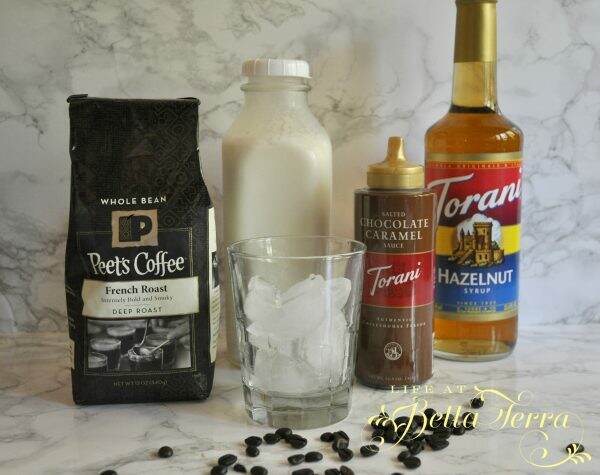
We use our cold brew concentrate for iced coffee, however, it can be heated also. Below I’ve added my homemade almond milk. For the blog post on making nut milks, click here.
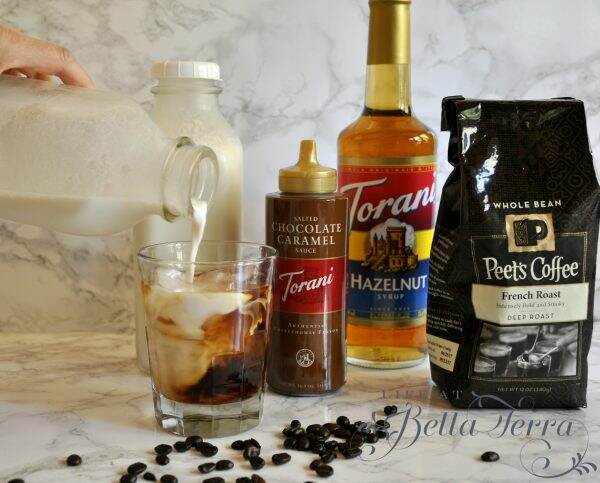
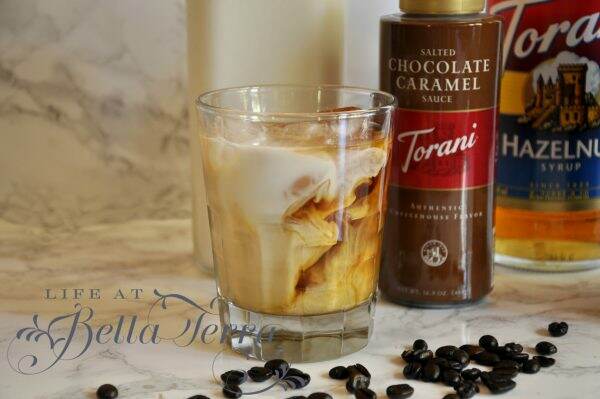
From what I have read, cold brew coffee concentrate will last up to 2 weeks in your refrigerator. It does have a smoother taste, yet all the flavor of coffee…and very handy to use.
![]()